The global explosion protection system can be divided into: Zone System (Global) and Division System (North America). The two explosion-proof systems are independent of each other!
Explosion-proof system distribution map
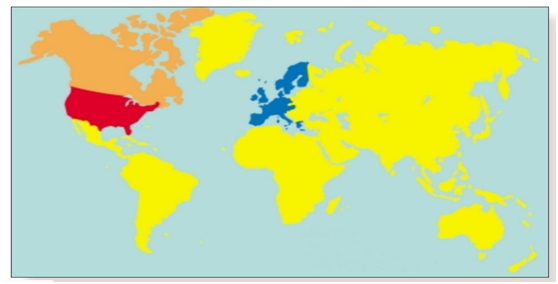

The proportion of Zone Division series used in North America
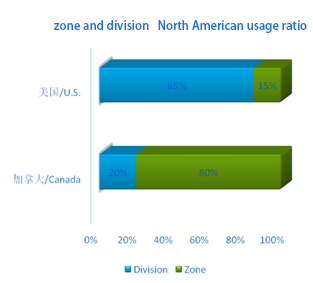
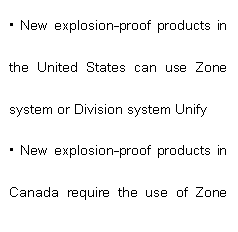
Three elements of explosion:
- Explosive substances: gases that can react with oxygen (air), Liquid, and solid. (Hydrogen, acetylene, methane, alcohol, Gasoline, flour, aluminum powder)
- Oxygen or air
- Ignition sources: including open flames, electrical sparks, mechanical sparks, Static spark, high temperature, chemical reaction.
One sentence summary: The ignition source is temperature and energy!
Three common explosion-proof principles:
- Control explosive substances (make explosive substances inaccessible To the detonation source, Ex P)
- Control the explosion range (control the explosion within a certain range, and its His scope is not affected, Ex d)
- Control the detonation source (eliminate the detonation source, reduce energy and temperature, Ex i).
One sentence summary: Control the three elements of explosion or control the scope of explosion
The key parameters that determine explosive substances: Explosive concentration, ignition temperature!
Explosion concentration range of common gases
|
Gas name |
Lower explosive concentration limit |
Upper explosive concentration limit |
|
Methane |
5.0 |
15 |
|
Propane |
2.1 |
9.5 |
|
hydrogen |
4.0 |
75.6 |
|
Ethanol |
3.5 |
19 |
|
Ether |
1.7 |
48 |
|
Acetylene |
1.5 |
82 |
The ignition temperature of common gases
|
Gas |
Ignition temperature (° C) |
|
Methane |
537 |
|
Acetylene |
305 |
|
Propane |
466 |
|
Hydrogen |
560 |
|
Butane |
365 |
|
Ether |
170 |
|
Gasoline |
260 |
|
Ammonia |
630 |
Common types of explosion protection
|
Explosion-proof type |
Mark |
Detailed mark |
|
Flameproof type |
Ex d or "d" |
"da", "db", "dc" |
|
Intrinsically safe |
Ex i or "I" |
"ia", "ib", "ic" |
|
Increased safety type |
Ex e or "e" |
"eb", "ec" |
|
Encapsulation |
m or "m" |
"ma", "mb", "mc" |
|
Pressurized Enclosures |
Ex p or "p" |
"pxb", "pyb", "pzc" |
|
"N" type (Type of Protection) |
Ex n or "n*" |
"nR", "nC", "nA" |
|
Enclosure Protection type |
Ex t or "t" |
"ta", "tb", "tc" |
The different types of explosion protection are explained below, for you reference. If you have any doubts, please contact us.
Flameproof type
Zone system: "d"
Division system: "XP"
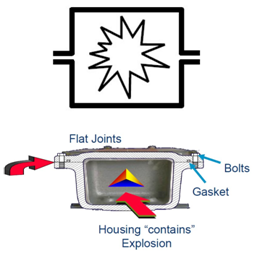
Allow internal explosion
Control the surface temperature
Can be used in Zone 1, Zone 2, Division 1, Division 2
Note: "da" explosion-proof equipment can be used in Zone 0, the conditions are stricter, and there are few practical applications.
CES has 3 series of explosion proof lights belonging to Flameproof type (IEC/EN 60079-1)
CES-EX-LN Series Explosion Proof Led Linear Light
CES-EX-GB Series Explosion proof led high bay
CES-SC Series Explosion proof led hand light
Increased safety type
Zone system: "e"
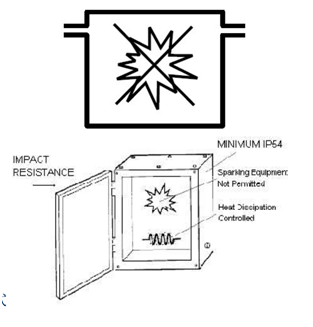
A shock-resistant shell is required
Control the temperature of the internal and external surfaces
Minimum protection grade IP54
No arc, no spark
Can be used in Zone 1, Zone 2
Note: There is no explosion-proof type for the Division system.
CES-J Series Explosion proof LED Floodlights belonging to Increased safety type.
CES-EX-SF Series Explosion proof LED Luminaries belonging to Enclosure Protection type
Intrinsically safe type
Zone system: "ia / ib / ic"
Division system: "IS"
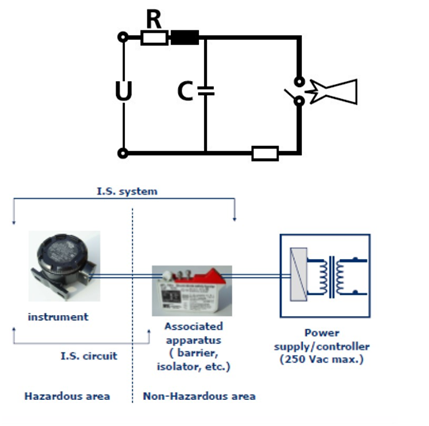
Limit energy; limit temperature
Can be used in: Zone 0, Zone 1, Zone 2, Zone 20, Zone 21, Zone 22, Division1, Division 2
Type n / Nonincendive
Zone system: "n"
Division system: "NI"
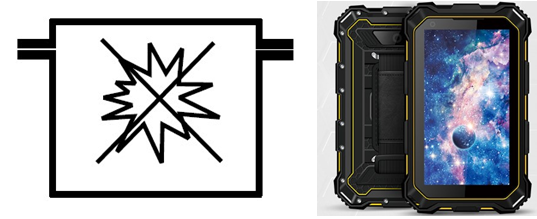
Equipment has no normally arcing parts ;
Thermal effects incapable of ignition ;
nA = no spark
nR = restricted breathing
nC = limit spark
nL = ic limited energy
Can be used in Zone 2, Division 2
Enclosure Protection type: Dust Ignition Protection By Enclosure
Zone system: "ta / tb / tc"
Division system: "DIP"

Control surface temperature;
Requirements for protection level IP 6X, IP 5X;
Can be used in: Zone 20, Zone 21, Zone 22, Division1, Division 2;
CESP explosion proof lighting products conform to a variety of explosion-proof type. If you are looking for explosion-proof lights for your project, please submit your requirements to us, and we will match you with suitable lamps.

